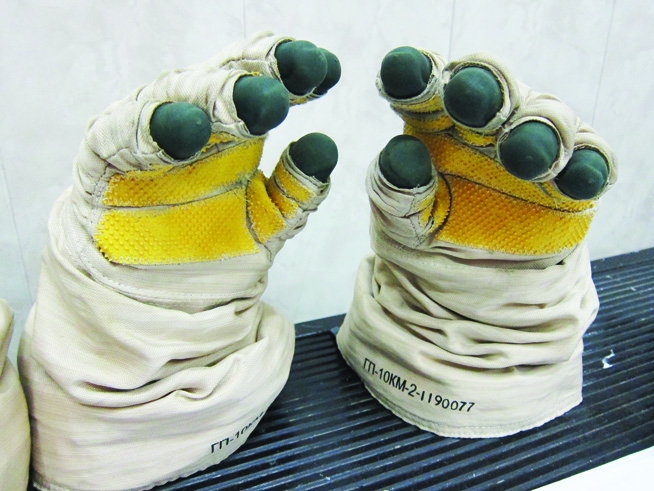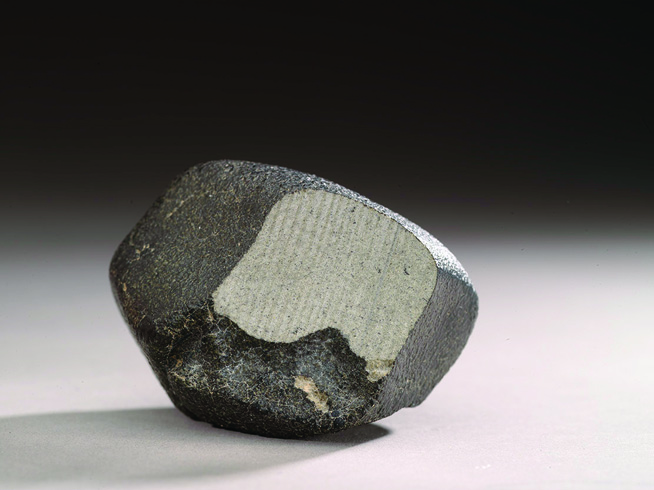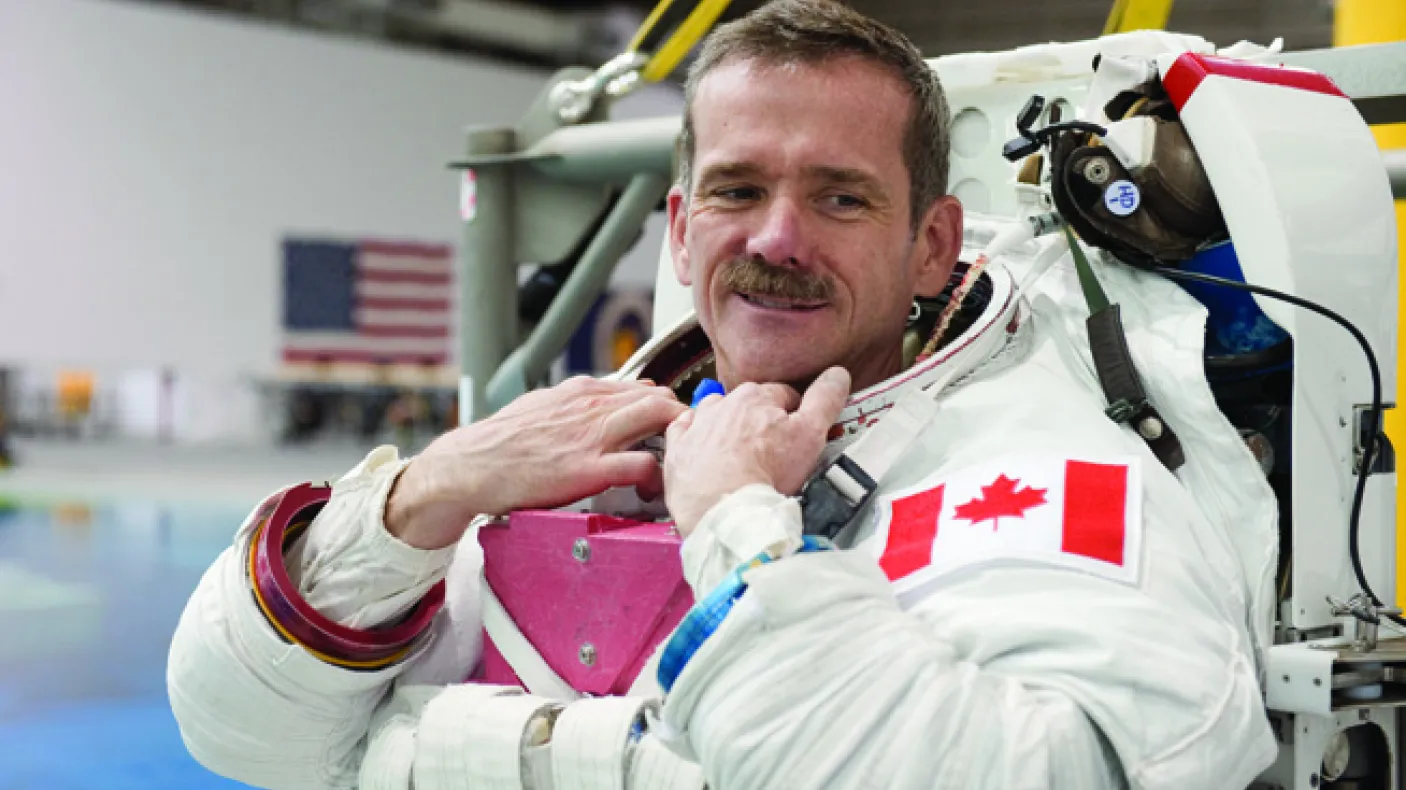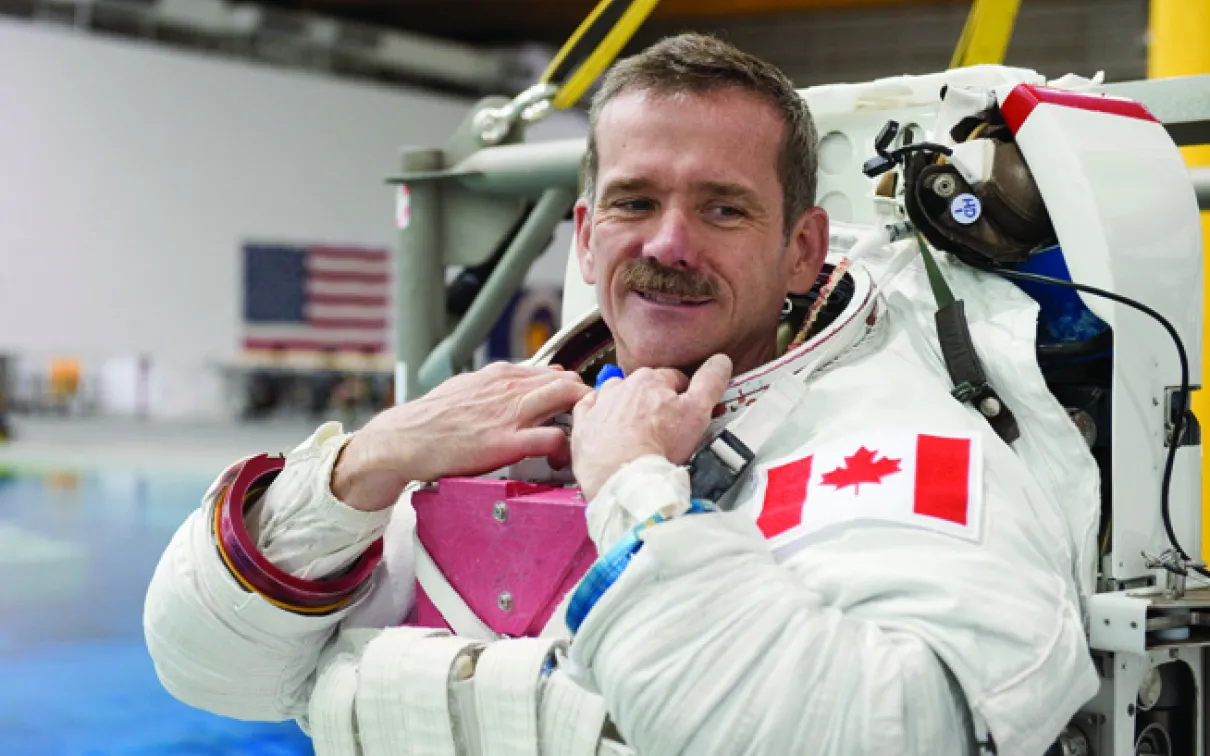Profile: Canada's Astronaut
Published
Categories
Author
Blog Post
Chris Hadfield sits down with ROM Magazine and talks space, dinos, and risk.
We’re eager to hear about your favourite objects and places at the ROM, but we don’t get to chat with astronauts very often, so we’re hoping to ask a few questions about your space travels first…
Thinking back to your first space trip, what was scarier, the process of leaving the planet, or returning?
It’s not really a question of being scared or not, it’s more about risk. It’s much riskier leaving, by far. On a six-month space flight, 50 percent of all risk is in the first nine minutes. Launch is extremely dangerous. During my first space shuttle flight, back in November 1995, the odds of dying in the first eight minutes and 42 seconds were one in 38. Terrible odds. If commercial airline flights had those odds, I think they would crash 22 airplanes a day. It’s that level of risk. So launch is definitely the riskier part. Neither is scary. But, definitely, launch is riskier.
You recently loaned the ROM a pair of gloves that you wore on a space mission. Can you tell us more about what makes those gloves special?
There are different types of space suits built for different purposes. Some you just wear inside just in case the ship springs a leak, so you want to be wearing a pressure suit, sort of like a high-altitude pilot wears, but it’s not a suit that you’re going to go outside in. But there are some suits that are built specifically to go outside on space walks. I was Canada’s first space walker; I’ve done that twice. Those gloves are from a Russian suit called an Orlan, which means “sea-eagle.”

Is there anything particularto using those gloves? Are they ergonomically friendly?
Oh, no, they’re ergonomically wicked. They’re the best compromise we could come up with, but wearing a space-walking suit is like being inside a balloon. And the balloon is pressurized to about the same pressure as an indoor volleyball. You know, if you grab an indoor volleyball and push on the side of it and feel just how stiff it is, that’s how stiff your suit and gloves are when you’re in a space-walking suit. So just to close your fist, you’re fighting all of the inflated stiffness of the glove, and to bend your elbow or move your waist or your legs, it’s a constant resistance exercise workout, like you’re on a universal gym the whole time you’re out on a space walk. And we’ve tried to make the gloves as nice as we can, they’re a lot better than they used to be, but they’re still pretty primitive. But there are a couple of clever design elements. If you look inside that glove, it’s got a really nice universal joint around the wrist, so that you can bend your wrist forward and back and left and right. And then there’s a pinching bar: it goes around the flesh of your hand, from the back of the hand right into the palm. We call it a palm bar, and it pinched us really hard when the suit’s not pressurized. So when the suit pressurizes, it holds the suit from sort of ballooning into your palm. And then we’ve tried to make the fingertips as thin as we can, but still safe. So they’re still very thick. It’s like trying to do car repair wearing hockey gloves.
As an astronaut, are there any places at the ROM that you are particularly drawn to?

The meteorites! They are fascinating to me. They are our chance to explore the solar system without actually going. To actually physically touch and see, lift and look at, and question what we’re all made of and where it all came from. The chance to see them, especially pieces of Mars, is such a rare opportunity. The improbability of that existing on Earth at all, and yet to have so many of those pieces at the ROM—to me that’s one of the more alluring areas.
Do you recall what inspired your first visit to the ROM?
I went with my school originally. It was a great experience, running around, filling your mind with new ideas, as a visit to a museum should be. That’s what’s special about a natural history museum. It ought to be a continuous stimulating parade of things that you only really imagined or had never even be able to imagine, and I remember it exactly that way. From old diorama exhibits, to bones, to meteorites, to minerals, I was really fascinated by the huge variety of mineralogical specimens. I love museums and the ROM is well-classed.
If you could bring one special person to visit the ROM, who would it be?
My granddaughter. She’s only four months old, but I’d like to move forward in time about four years and bring her to the ROM. She lives in China with my son and his wife, so I haven’t met her yet. I’m very much looking forward to it. Of course, I’d like to go with Leonardo da Vinci. I would love to go with Galileo, and I would be the student. But I would really love to go with my granddaughter. Just because of the chance it would give us to talk about things.
Is there a favourite object in the Museum that stands out to you as something you would like to have in your own home?
I’d like to have a dinosaur. A full dinosaur skeleton, that’s what I’d like to have. I’d just love to have one in my living room so that when I’m sitting watching TV, I’m under the belly bones of an Allosaurus. The link to me would be fascinating and so bizarre. I mean, it could stick through two floors of my house. It would be really different.
What advice would you give to someone who has never visited the ROM before?
I think it depends. If you’re a kid, I would say, just go, and look, and do your homework afterwards. But as an adult, I would actually say, go to the website and look through it, and think about what it is you want to go see. Do a little research in advance, because I think you get more out of it that way. If you just wander around, after a while it can sort of bounce off you, and you might miss something at the core of your interest. It’s sort of like going to the Louvre, or going to any of the big multifaceted museums, like the Hermitage in Saint Petersburg. If you just walk in cold, you’re just going to be numb, mentally numb, because you’re overwhelmed by the variety. And so I think it’s better to not try and see a whole museum in a day, but to go and see specific galleries and collections, and then spend time thinking about them.
Originally published in the Spring 2016 edition of the ROM Magazine.


